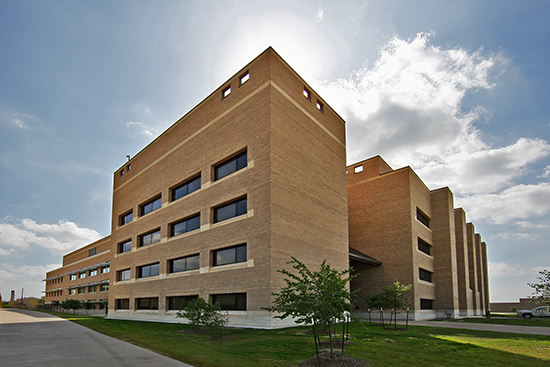CVM Doctoral Programs Strive To Enhance Diversity In Biomedical Sciences
Story by Megan Myers, CVMBS Communications

Two graduate programs housed within the Texas A&M College of Veterinary Medicine & Biomedical Sciences (CVM) will take part in the new campus-wide Initiative for Maximizing Student Diversity (IMSD) to increase recruitment and retention of Doctor of Philosophy (Ph.D.) students from underrepresented populations.
The initiative, created to enhance diversity in biomedical sciences, is supported by a five-year, $1.2 million grant from the National Institute of General Medical Sciences, one of the National Institutes of Health (NIH).
IMSD focuses on students in various Ph.D. degree programs that fall within the general field of biomedical sciences, including the CVM’s Biomedical Sciences Graduate Program and the toxicology program under the Interdisciplinary Faculty of Toxicology (IFT), housed at the CVM.
Alongside the Texas A&M Office of Graduate and Professional Studies (OGAPS), an executive committee of six faculty members will help lead the initiative. Those representing the CVM and the IFT include Dr. Weihsueh Chiu, Dr. Candice Brinkmeyer-Langford, and University Professor Dr. Ivan Rusyn.
The initiative will provide 12 pre-doctoral trainees, two for each program, across campus with a training grant for their first year in a Ph.D. program, allowing them to explore opportunities in a way they could not if they were funded solely by a research grant.
“Because Ph.D. students do not yet receive research grant funding in their first year, this funding will allow them to take the summer to do a nonacademic internship,” said Chiu, a professor in the CVM’s Department of Veterinary Integrative Biosciences (VIBS) who will help connect IMSD students with internship and externship opportunities.
“This type of internship and externship experience is very useful for them in figuring out what it’s really like out there after you get your Ph.D. because they can explore different sectors, whether it’s government or industry or consulting or nonprofits earlier in their Ph.D. program,” he said.
The Texas A&M IMSD will also bring together the selected students for regular “boot camps” that are designed to teach students skills they will need for the remainder of their doctoral journey, such as how to publish a paper and write a grant. These optional workshops, led by Brinkmeyer-Langford, will provide the opportunity to network with fellow students from underrepresented populations in similar fields of science.
“One of the objectives is to create a supportive community of underrepresented minority scholars, because they’re coming from similar backgrounds,” said Brinkmeyer-Langford, a research assistant professor in VIBS. “Some of these students may come from very difficult situations. One of the objectives is to create a community whereby they can support each other.
“We want to show people that we’re welcoming to people of diverse backgrounds; we have a community for them,” she said.
Unfortunately, many students pursuing Ph.D. degrees leave programs before they finish, either because of financial or personal reasons.
“If we build a good foundation, they’re less likely to leave early,” Chiu said. “We want to make sure that the potential non-financial reasons for leaving—that they’re not supported or they feel isolated—aren’t an impediment to them completing their degree.”
As students go through their first year of study with the support system and financial backing from IMSD, the hope is that they will enter the following years with the tools they need to succeed.
###
For more information about the Texas A&M College of Veterinary Medicine & Biomedical Sciences, please visit our website at vetmed.tamu.edu or join us on Facebook, Instagram, and Twitter.
Contact Information: Jennifer Gauntt, Director of Communications, Texas A&M College of Veterinary Medicine & Biomedical Sciences; jgauntt@cvm.tamu.edu; 979-862-4216


